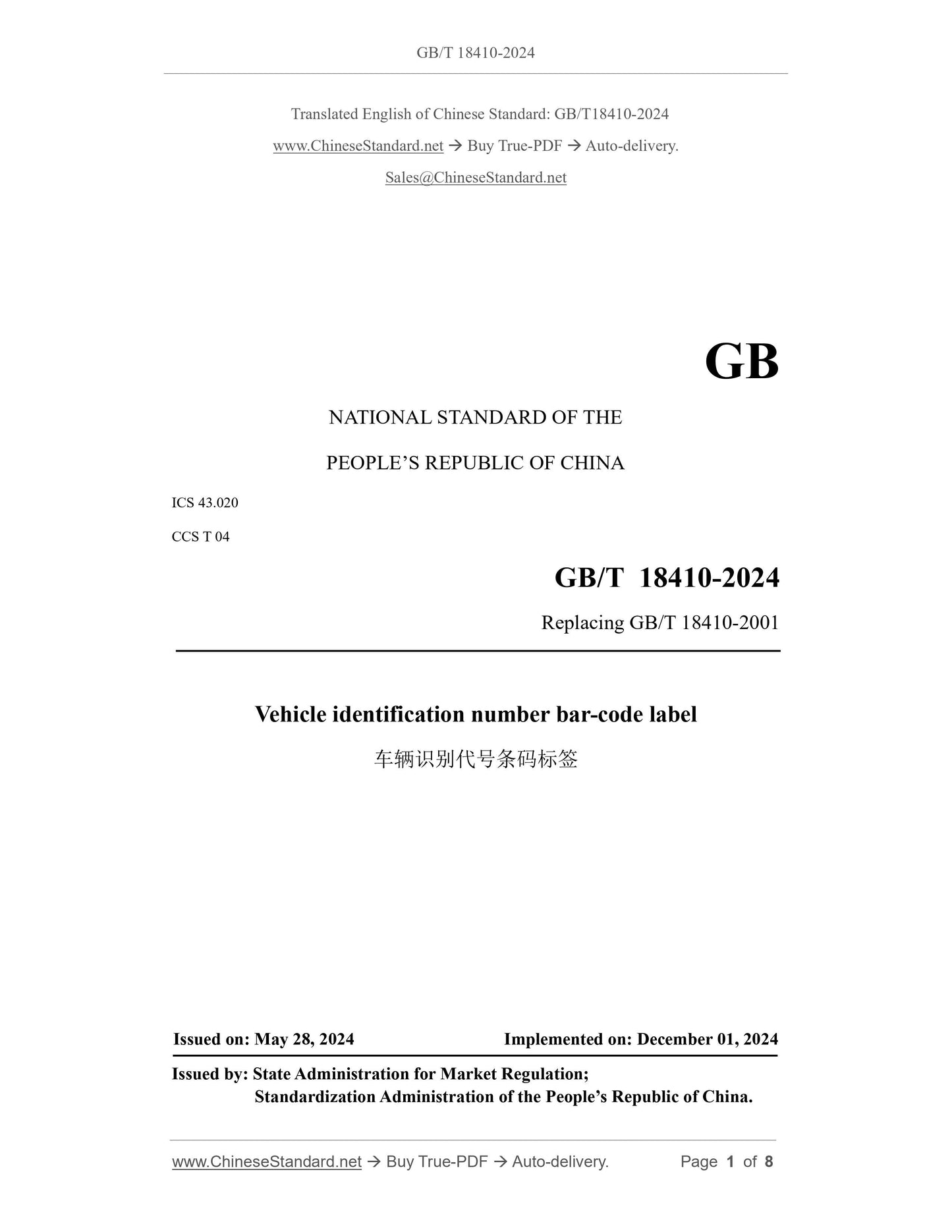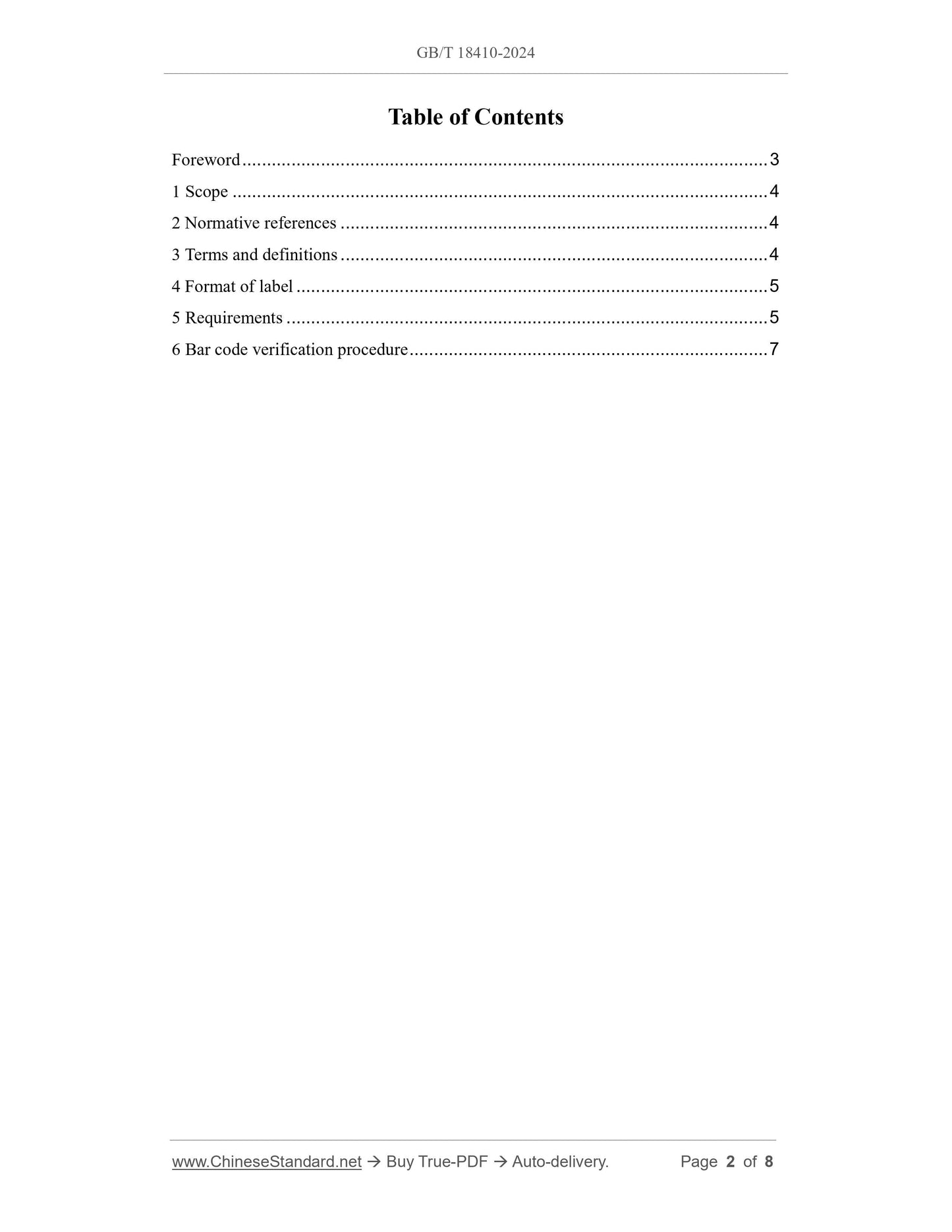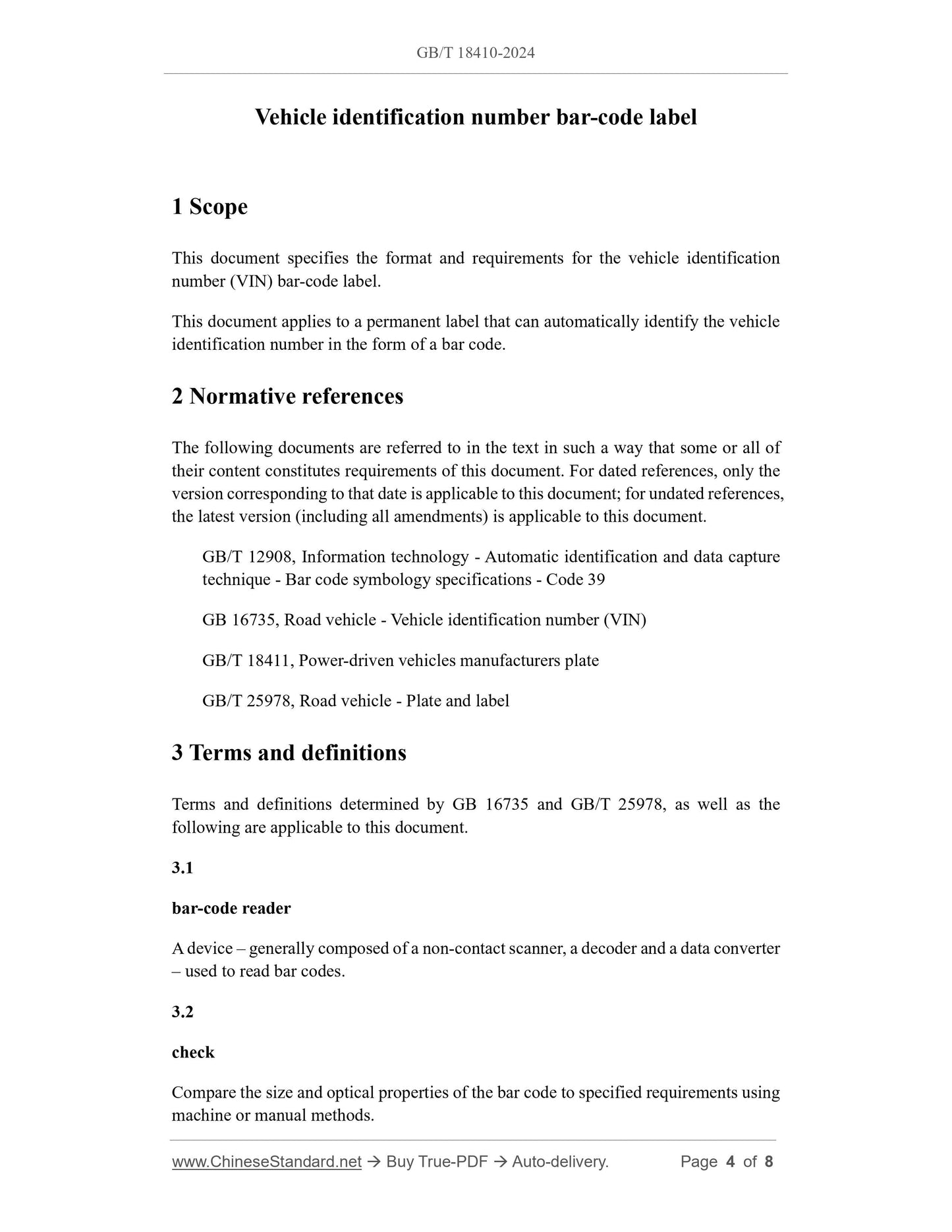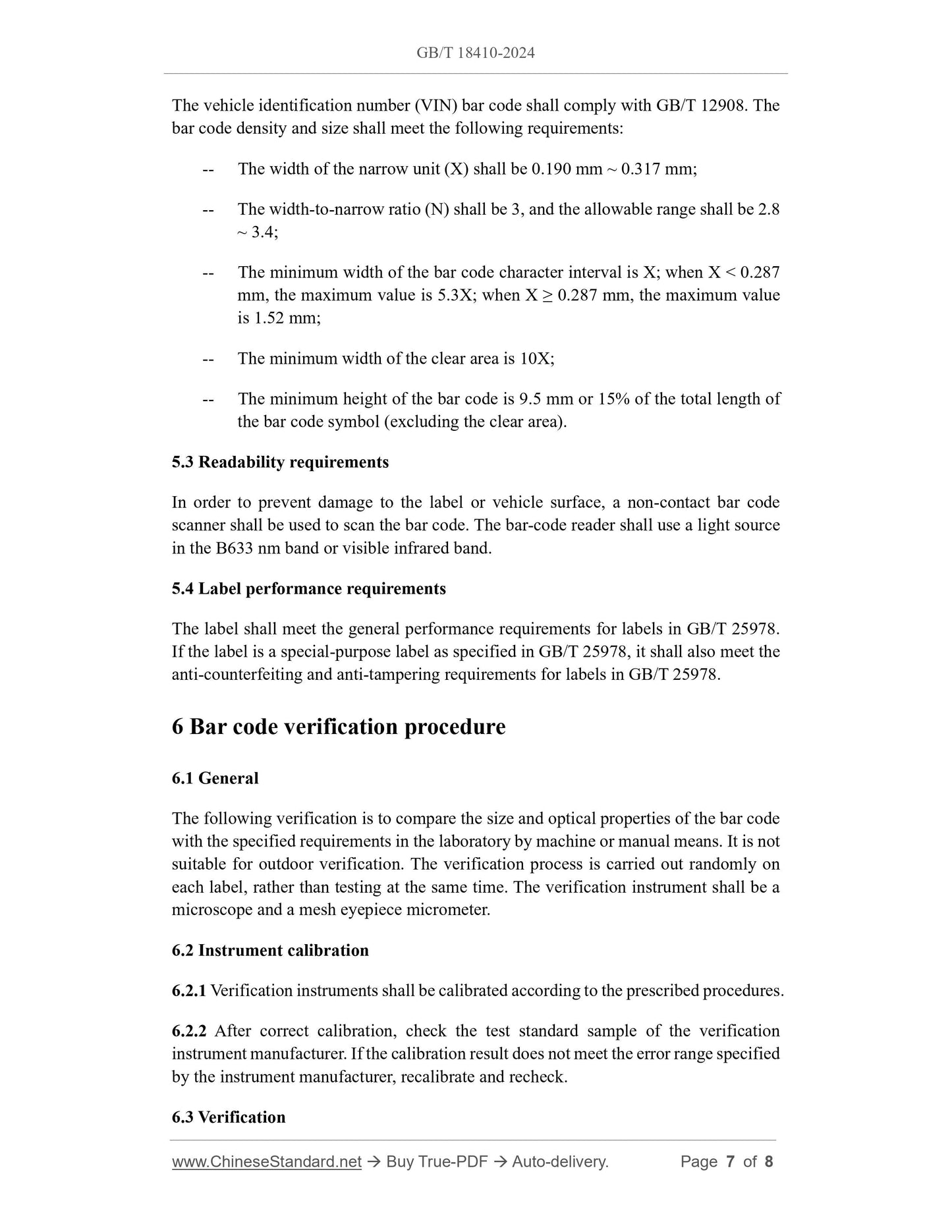1
/
of
4
www.ChineseStandard.us -- Field Test Asia Pte. Ltd.
GB/T 18410-2024 English PDF (GB/T18410-2024)
GB/T 18410-2024 English PDF (GB/T18410-2024)
Regular price
$170.00
Regular price
Sale price
$170.00
Unit price
/
per
Shipping calculated at checkout.
Couldn't load pickup availability
GB/T 18410-2024: Vehicle identification number bar-code label
Delivery: 9 seconds. Download (and Email) true-PDF + Invoice.Get Quotation: Click GB/T 18410-2024 (Self-service in 1-minute)
Newer / historical versions: GB/T 18410-2024
Preview True-PDF
Scope
This document specifies the format and requirements for the vehicle identificationnumber (VIN) bar-code label.
This document applies to a permanent label that can automatically identify the vehicle
identification number in the form of a bar code.
Basic Data
| Standard ID | GB/T 18410-2024 (GB/T18410-2024) |
| Description (Translated English) | Vehicle identification number bar-code label |
| Sector / Industry | National Standard (Recommended) |
| Classification of Chinese Standard | T04 |
| Classification of International Standard | 43.020 |
| Word Count Estimation | 10,128 |
| Date of Issue | 2024-05-28 |
| Date of Implementation | 2024-12-01 |
| Issuing agency(ies) | State Administration for Market Regulation, China National Standardization Administration |
Share







